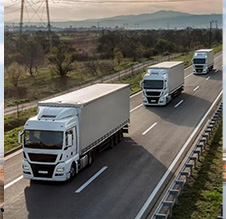
In today’s fast-paced business environment, efficient warehousing and distribution are critical to meeting customer demands, reducing costs, and maintaining a competitive edge. Whether you’re a manufacturer, retailer, or e-commerce business, optimizing these processes can significantly impact your bottom line.
In this blog post, we’ll explore the key aspects of warehousing and distribution, their importance, and best practices for improving efficiency.
What is Warehousing?
Warehousing refers to the storage of goods before they are distributed to retailers, wholesalers, or end consumers. A well-managed warehouse ensures that products are stored safely, tracked accurately, and retrieved efficiently when needed.
Key Functions of Warehousing:
- Storage – Safekeeping of goods until they are needed.
- Inventory Management – Tracking stock levels to prevent shortages or overstocking.
- Order Fulfillment – Picking, packing, and preparing orders for shipment.
- Cross-Docking – Direct transfer of goods from inbound to outbound trucks to reduce storage time.
- Value-Added Services – Labeling, kitting, and assembly services.
What is Distribution?
Distribution involves the movement of goods from warehouses to customers or retail locations. An effective distribution strategy ensures timely deliveries, minimizes transportation costs, and enhances customer satisfaction.
Key Components of Distribution:
- Transportation Management – Choosing the right shipping methods (road, rail, air, or sea).
- Last-Mile Delivery – The final step of delivering goods to the customer’s doorstep.
- Reverse Logistics – Handling returns and exchanges efficiently.
- Technology Integration – Using software for route optimization and real-time tracking.
Why Are Warehousing and Distribution Important?
- Improved Customer Satisfaction – Faster and more accurate deliveries lead to happier customers.
- Cost Efficiency – Proper inventory and logistics management reduce waste and transportation expenses.
- Scalability – A well-organized system supports business growth and seasonal demand fluctuations.
- Competitive Advantage – Companies with efficient supply chains outperform competitors in speed and reliability.
Best Practices for Optimizing Warehousing and Distribution
- Implement Warehouse Management Systems (WMS) – Automate inventory tracking and order processing.
- Adopt Automation & Robotics – Use automated storage and retrieval systems (AS/RS) to speed up operations.
- Optimize Warehouse Layout – Organize storage for easy access to high-demand products.
- Use Data Analytics – Forecast demand and adjust inventory levels accordingly.
- Partner with 3PL Providers – Third-party logistics companies can offer expertise and cost-effective solutions.
- Focus on Sustainability – Reduce waste, optimize delivery routes, and use eco-friendly packaging.
The Future of Warehousing and Distribution
With advancements in AI, IoT, and drone deliveries, the future of warehousing and distribution is becoming smarter and faster. Companies that embrace these technologies will lead the way in efficiency and customer satisfaction.
Final Thoughts
Warehousing and distribution are not just about storing and moving goods—they are strategic functions that drive business success. By leveraging technology, optimizing processes, and focusing on customer needs, businesses can build a robust supply chain that delivers results.
Is your business maximizing its warehousing and distribution potential? Let us know in the comments!


